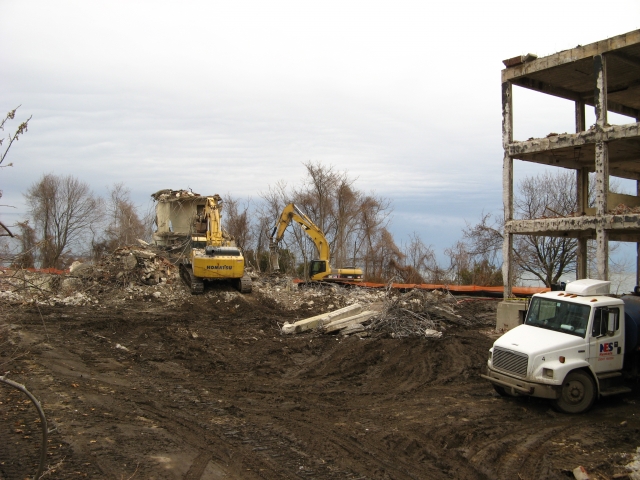|
Why Do Archeology on Davids Island? |
|
As it planned the demolition of Fort Slocum’s ruins, the U.S. Army Corps of Engineers conducted studies to investigate the contents and characteristics of archeological deposits around the buildings and structures where workers and heavy machinery would be operating. The Corps conducted these studies to comply with requirements of Section 106 of the National Historic Preservation Act.
The archeological record is fragile. It consists not just of objects, but also the layers of soil that contain them and the spatial relationships among the objects and the soil layers.
Stirring the soil around, digging it up or moving it from place to place disrupts these relationships and obscures or destroys much of the information an archeological site may contain. Archeological deposits are changed or lost as successive groups of people shape and reshape the landscape to fit their needs.
Archeological studies helped the Corps of Engineers determine whether the demolition work was likely to damage significant archeological deposits on Davids Island and to identify steps it could take to avoid or minimize damage. While the studies focused on these practical issues, they also augmented and extended the island’s documentary record and recovered tangible tokens of its history.
The Corps was not the first entity to sponsor archeological investigations on Davids Island. In the 1980s, as developers planned a residential community for the island (a project that was never implemented), a team of archeologists conducted an archeological survey. Other studies have also been performed in conjunction with utility work on the island and by professors and curators from area universities and museums conducting research.
|



